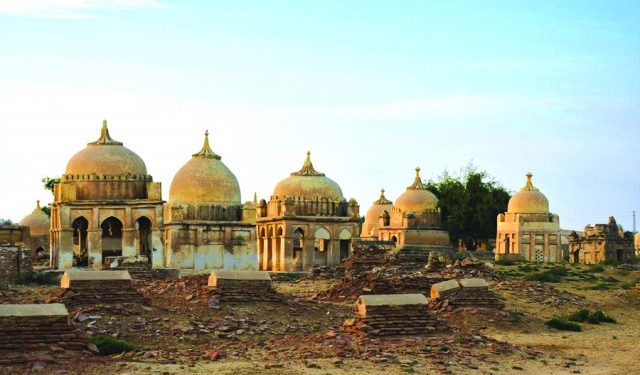
Mian Naseer Muhammad Kalhoro as a leader of Mianwal Tariqa surpassed his predecessors in increasing his religious as well as political power and influence in upper Sindh in the third and fourth quarters of the seventeenth century.
Zulfiqar Ali Kalhoro
There is a large number of cultural and religious heritage sites in Sindh which has great tourism potential. One such site includes the necropolis of Mian Naseer Muhammad Kalhoro, which is located about 28 km west of Khairpur Nathan Shah taluka in Dadu district. This necropolis contains thousands of graves, sixty domed structures and four mosques. The domes of some of the tombs have caved in. All the domed structures are noted for mural paintings. This cemetery contains the tombs of Kalhora and their followers, the majority of whom died fighting against the Mughals and their supporters.
The main site of pilgrimage in the necropolis is the shrine of Mian Naseer Muhammad Kalhoro which attracts hundreds of his devotees every day. On the annual Mela at his shrine, hundreds of thousands of people flock to his shrine from Balochistan, Punjab and different districts of Sindh.
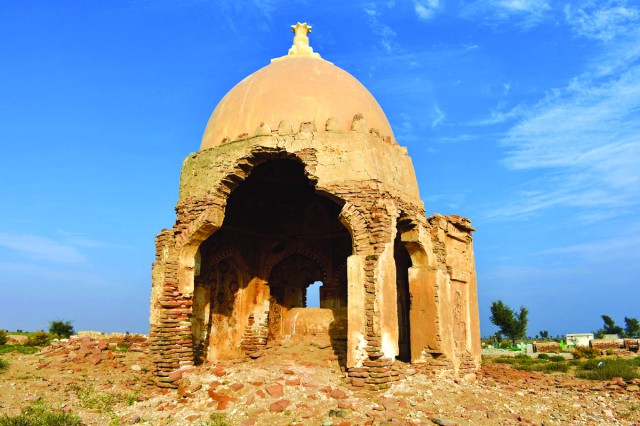 Mian Naseer Muhammad Kalhoro son of Muhammad Ilyas Kalhoro, succeeded his Uncle Mian Shah Ali alias Shahal Muhammad as a religious leader of the Mianwal Tariqa. He shifted his headquarters from Fatehpur, Larkana to the plains at Garhi in present Dadu district. This site can be the best religious tourist site after the shrines of Lal Shahbaz Qalandar and Shah Abdul Latif Bhittai in Sindh if it is properly promoted for religious tourism.
Mian Naseer Muhammad Kalhoro son of Muhammad Ilyas Kalhoro, succeeded his Uncle Mian Shah Ali alias Shahal Muhammad as a religious leader of the Mianwal Tariqa. He shifted his headquarters from Fatehpur, Larkana to the plains at Garhi in present Dadu district. This site can be the best religious tourist site after the shrines of Lal Shahbaz Qalandar and Shah Abdul Latif Bhittai in Sindh if it is properly promoted for religious tourism.
Mian Naseer Muhammad Kalhoro as a leader of Mianwal Tariqa surpassed his predecessors in increasing his religious as well as political power and influence in upper Sindh in the third and fourth quarters of the seventeenth century. Mian Naseer Muhammad Kalhoro (d. 1692) was a scion of the Mianwal Tariqa who paved the way for the Kalhora rule throughout Sindh. Mian Naseer Muhammad Kalhoro was the first Kalhora leader who laid the foundation of Kalhora dynasty. The number of his disciples increased during his leadership. He captured many regions and established his rule there. The present districts of Larkana, Dadu, Naushero Feroz, some parts of Nawabshah and some regions in Jhal Magsi and Kamber-Shahdadkot were under his dominion.
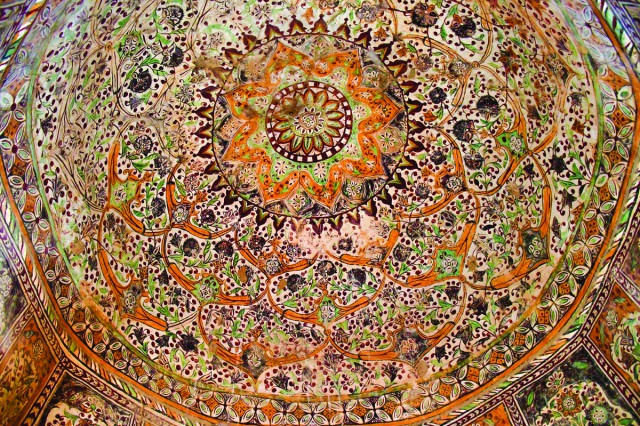
Eventually, Mian Naseer Muhammad Kalhoro died after a glorious struggle of 35 years. He was succeeded by his eldest son Mian Din Muhammad Kalhoro in 1692. Mian Naseer Muhammad Kalhoro had three sons, Mian Din Muhammad Kalhoro, Mian Yar Muhammad Kalhoro and Mian Mir Muhammad Kalhoro. Mian Din Muhammad Kalhoro rose to become the leader of the Mianwal Faqirs and subsequently led the Mianwal Tariqa/movement wisely. The Kalhoras had already become stronger under the leadership of Mian Naseer Muhammad Kalhoro and brought many areas under their rule.
When the Mughals could not crush the Mianwal Tariqa through a series of attacks on the dairas of the Faqirs, they got ready to settle the score with the Kalhoars once and for all
Mian Din Muhammad Kalhoro continued the mission of his father and gained great popularity, which consistently irritated the Mughal governors of Bakhar and Sehwan. They had become politically strong and captured some areas where they established their rule. The rising power of the Kalhoras was not acceptable to the Mughals and their supporters. In order to crush the Mianwal Tariqa, the Mughal governors of Bakhar and Sehwan worked in tandem. They attacked various dairas (communes) of the Mianwal Faqirs several times. However, all their attacks were unavailing, and the Mianwal Faqirs remained unyielding in their opposition to the Mughals, resisting them to the utmost.
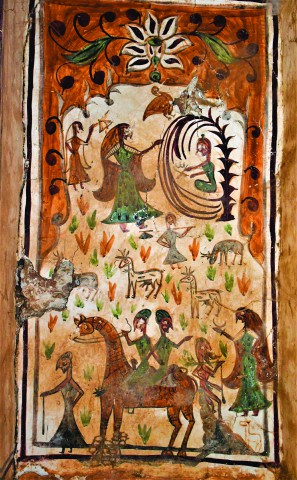
When the Mughals could not crush the Mianwal Tariqa through a series of attacks on the dairas of the Faqirs, they got ready to settle the score with the Kalhoars once and for all. As a result, the troops of both the Kalhoras and Mughals met on the battlefield near Gerelo in Larkana district. In that battle, Feroz Verar (the founder of Nausharo Feroz), a disciple of Mian Naseer Muhammad Kalhoro and the general of Mian Din Muhammad Kalhoro’s army, led the Kalhora army, while Shaikh Jahan led the Mughal forces. The governor of Bakhar, Allahyar Khan, also took part in the battle. A battle was fought in 1699 in which many soldiers from both sides lost their lives. The Kalhoras completely routed the Mughals in that battle, emerging as a formidable force. Shaikh Jahan lost his life and Allahyar Khan fled from the battlefield.
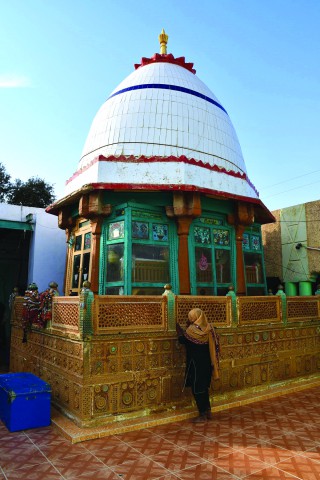
When the Mughal Prince Muiz ud Din heard the news of the defeat of his governor, Allahyar Khan, and the death of his military officer, Shaikh Jahan, by the Kalhora army, he marched from Lahore to Sindh to retaliate. Mian Din Muhammad Kalhoro deemed it wise to send his brother, Mian Mir Muhammad Kalhoro, and two advisors, Qasim and Khaman, to Prince Muiz ud Din at Bakhar to submit. They appeared before the prince and convinced him of their intellect. After the submission of the Kalhoras, he returned to Lahore. One of the generals of Mian Din Muhammad Kalhoro, Maqsoodo Faqir, thought that the prince returned without witnessing the bravery and valour of the Mianwal Faqirs. In order to display his heroism and gallantry, he, without the consent of his mentor, ransacked the villages of Mathelo and went as far as Uch to plunder villages. The prince was on his way to Lahore when the news of looting and ransacking of villages by a Mianwal Faqir reached him. He set out for Sindh again in a flash and ordered his army to attack the villages of the Mianwal Faqirs. Mian Din Muhammad Kalhoro kept mum over the plundering of the villages by the prince. However, he asked for clemency and presented himself before the prince – who took him to Multan where, later on, he was murdered. His dead body was brought to Sindh and was buried near the tomb of his father Mian Nasir Muhammad Kalhoro. Today, the shrine of Mian Din Muhammad Kalhoro is the second most important site of pilgrimage for Mianwal faqirs after the shrine of Mian Nasir Muhammad Kalhoro in the necropolis.
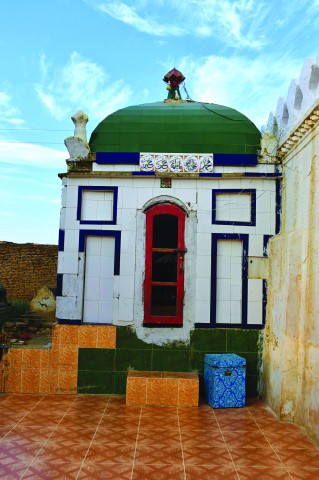
The necropolis of Mian Naseer Muhammad Kalhoro has great potential for religious and cultural tourism. The tombs are adorned with figural, floral geometric designs. The authorities concerned should chalk out a strategy to promote the necropolis as tourist site which will boost the local economy bringing opportunities of employment for the local populace. The local people can provide accommodation to the tourists by opening guest houses and hotels. They can also start small restaurants on the route to the necropolis of Mian Naseer Muhammad Kalhoro.
On the way to the necropolis of Mian Naseer Muhammad Kalhoro, tourists can also be guided about the historical Jamia mosque of Garhi, the shrines of the disciples of Mian Inayat Shah Taggar, Hamid Shah Chaddar and Fatu Pakhali – which are also popular shrines in the Kachho area of Dadu district. The local community can also participate in tour guiding and arrange cultural activities for the tourists. The locals in collaboration with non-locals can also manage or own the transport involved, for instance, taxi and bus services. I also believe that apart from direct participation of the local community, there are also other opportunities which arise indirectly, for instance, food supply, handicrafts, gardening, security, conservation, construction and maintenance. Moreover, community ownership of all this is also a very important issue to be taken into consideration. Local people should be educated about the importance of the historic necropolis of Mian Naseer Muhammad Kalhoro and other sites of cultural significance in the Kachho.
____________________
 Zulfiqar Ali Kalhoro is an anthropologist and author of 12 books including ‘Symbols in Stone: The Rock Art of Sindh’, ‘Perspectives on the art and architecture of Sindh’, ‘Memorial Stones: Tharparkar’ and ‘Archaeology, Religion and Art in Sindh’. He may be contacted at: zulfi04@hotmail.com
Zulfiqar Ali Kalhoro is an anthropologist and author of 12 books including ‘Symbols in Stone: The Rock Art of Sindh’, ‘Perspectives on the art and architecture of Sindh’, ‘Memorial Stones: Tharparkar’ and ‘Archaeology, Religion and Art in Sindh’. He may be contacted at: zulfi04@hotmail.com
Courtesy: The Friday Times Lahore